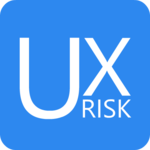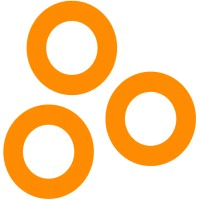Description

AuditBoard

UXRisk
Comprehensive Overview: AuditBoard vs UXRisk
AuditBoard Overview
a) Primary Functions and Target Markets
AuditBoard is a cloud-based platform designed to streamline and automate audit, risk, and compliance management processes. Its primary functions include internal audit management, risk management, compliance management, and SOX (Sarbanes-Oxley) compliance. It offers a suite of solutions for managing workflows, reporting, and collaboration among audit and risk teams.
Target Markets:
- Large Enterprises: AuditBoard primarily targets large enterprises that have complex audit, risk, and compliance needs.
- Publicly Traded Companies: Due to its strong SOX compliance features, it is particularly appealing to publicly traded companies.
- Internal Audit Departments: Companies with dedicated internal audit departments seeking to enhance efficiency and effectiveness.
- Industries: Common industries include finance, technology, healthcare, and manufacturing.
UXRisk Overview
a) Primary Functions and Target Markets
UXRisk is a risk management tool designed to help organizations identify, assess, and mitigate risks across their operations. Its functionality is more focused on risk management and mitigation strategies, supporting risk identification, risk assessment, and risk response planning.
Target Markets:
- Mid-Sized to Large Enterprises: Targets both mid-sized and large enterprises that require robust risk management systems.
- Industries with High-Risk Exposure: Particularly valuable in industries with high regulatory and operational risk exposure, such as finance, energy, and construction.
- Risk Management Teams: Aimed at companies with specialized risk management teams in need of a sophisticated toolset.
Market Comparison
b) Market Share and User Base
-
AuditBoard: AuditBoard has a strong presence among large enterprises and publicly traded companies, bolstered by its comprehensive suite of audit and compliance solutions. Its user base includes well-known multinational corporations, giving it a robust market presence in the enterprise sector.
-
UXRisk: UXRisk, being relatively specialized in risk management, commands a niche market share compared to the broader scope of AuditBoard. It tends to have a smaller user base focused on risk management rather than a comprehensive audit portfolio.
Key Differentiating Factors
c) Differentiating Factors Between AuditBoard and UXRisk
-
Scope of Solutions:
- AuditBoard provides a comprehensive suite that covers audits, compliance, risk, and SOX compliance, offering an integrated platform for varied governance needs.
- UXRisk is more specialized, with a sharper focus on risk management processes, assessment, and mitigation strategies.
-
Compliance Features:
- AuditBoard is well-suited for SOX compliance and internal audits, making it a preferred choice for companies with stringent regulatory requirements.
- UXRisk focuses on risk identification and response, without the same level of depth in compliance and internal audits as AuditBoard.
-
User Experience:
- AuditBoard is known for its intuitive user interface and workflow automation features, making it user-friendly for audit and compliance professionals.
- UXRisk emphasizes risk analysis tools, offering a robust user experience for risk professionals who prioritize detailed risk assessment.
-
Industry Focus:
- AuditBoard has a broad industry appeal but is especially dominant in sectors with heavy audit and compliance burdens.
- UXRisk targets industries where risk management is critical to the business model, such as energy, finance, and infrastructure.
-
Integration Capabilities:
- AuditBoard, with its integrated platform, offers comprehensive solutions that may replace multiple disparate systems.
- UXRisk often complements existing systems with specialized risk management tools, offering integration with other platforms in an organization's workflow.
In summary, while both AuditBoard and UXRisk serve the governance needs of enterprises, AuditBoard offers a broader solution landscape encompassing audit, risk, and compliance, whereas UXRisk specializes in risk management with a focus on in-depth risk assessment and mitigation strategies.
Contact Info

Year founded :
2014
+1 877-769-5444
Not Available
United States
http://www.linkedin.com/company/auditboard

Year founded :
2014
Not Available
Not Available
Norway
Not Available
Feature Similarity Breakdown: AuditBoard, UXRisk
AuditBoard and UXRisk are both software platforms designed to help organizations manage risk, compliance, and audit processes. Below is a breakdown of their feature similarities and differences:
a) Core Features in Common
-
Risk Management: Both platforms offer comprehensive tools for identifying, assessing, and monitoring risks. They provide frameworks for risk documentation, analysis, and reporting.
-
Audit Management: These platforms support end-to-end audit management, including planning, execution, and reporting. This involves automated workflows, task assignments, and audit trail capabilities.
-
Compliance Management: They offer features to help organizations maintain compliance with various regulatory requirements. This includes managing policies, procedures, and controls, as well as ensuring alignment with standards such as SOX, ISO, or GDPR.
-
Reporting and Dashboards: Both platforms provide customizable reporting tools to visualize audit and risk data, offering dashboards that can be tailored to meet the informational needs of different stakeholders.
-
Collaboration Tools: Both AuditBoard and UXRisk facilitate collaboration among team members and stakeholders through tools that enable document sharing, communication, and task management within the platform.
b) User Interface Comparison
-
AuditBoard: Known for its user-friendly and intuitive interface, AuditBoard offers a modern design with easy navigation. Users typically appreciate its streamlined look and feel, which is designed to enhance productivity by minimizing the learning curve.
-
UXRisk: UXRisk also offers a clean and functional interface, though it may not be as polished or visually engaging as AuditBoard. However, it focuses on functionality and provides users with straightforward access to its comprehensive set of features.
In general, both platforms aim to offer seamless user experiences, but AuditBoard may have a slight edge in terms of visual aesthetics and ease of use.
c) Unique Features
-
AuditBoard:
- SOXHUB: AuditBoard’s specialized module for Sarbanes-Oxley (SOX) compliance is a key differentiator. It offers tailored tools for SOX testing and management, which may not be as robust in UXRisk.
- Continuous Monitoring: AuditBoard provides features that support continuous control monitoring, enabling real-time risk and compliance status updates.
-
UXRisk:
- Risk Quantification: UXRisk offers advanced features for risk quantification, allowing organizations to assess risk in financial terms and prioritize risk treatment based on potential business impact.
- Scenario Analysis: UXRisk includes scenario analysis capabilities, which help organizations model potential risk events and understand their implications in different scenarios.
In summary, while both AuditBoard and UXRisk offer comprehensive solutions for audit, risk, and compliance management, they have nuanced differences that might appeal to organizations based on specific needs. AuditBoard is particularly strong in SOX compliance and has a modern interface, while UXRisk might attract users with its risk quantification and scenario analysis capabilities.
Features

Internal Audit Management
Compliance Management
Risk Management
Controls Management
Data Management

Incident Management
Risk Management Dashboard
Compliance Management
Reporting and Analytics
Risk Assessment Tools
Best Fit Use Cases: AuditBoard, UXRisk
AuditBoard and UXRisk both serve as valuable tools in the domain of risk management and auditing, but they cater to different requirements and situations. Here’s an overview of their best-fit use cases:
AuditBoard:
a) For what types of businesses or projects is AuditBoard the best choice?
-
Mid to Large-Sized Enterprises: AuditBoard is an excellent choice for mid to large-sized enterprises looking for a comprehensive audit management solution. It is designed to enhance audit efficiency and collaboration across larger teams where complex workflows are involved.
-
Organizations with Robust Compliance Needs: Businesses operating in heavily regulated industries, such as financial services, healthcare, or energy, would benefit the most. AuditBoard provides strong support for compliance frameworks including SOX, ISO, and GDPR.
-
Integrated Risk Management: For companies looking for a platform that can integrate risk management with audit, compliance, and governance functions, AuditBoard is ideal due to its interconnected modules that provide a holistic view of operational risks and controls.
-
Businesses Seeking Automation: Organizations aiming to automate their audit processes to enhance efficiency and reduce manual tasks are well-suited for AuditBoard, which offers capabilities like workflow automation and data analytics.
UXRisk:
b) In what scenarios would UXRisk be the preferred option?
-
User Experience and Design Focused Projects: UXRisk is specifically designed for projects where user experience and design are critical aspects. Companies engaging extensively in UX research, development, and testing would find UXRisk particularly useful for assessing user-centric risks.
-
Product Development Teams: Agile teams involved in product development can use UXRisk to manage and mitigate design-related risks early in the development cycle, ensuring that customer feedback is integrated effectively into product design.
-
Small to Medium-Sized Companies: UXRisk can be advantageous for smaller organizations or startups that need a flexible and intuitive tool for UX risk management without the complexity or scale of larger platforms like AuditBoard.
-
Focus on Usability Testing: In scenarios where continuous usability testing and UX iterations are crucial, UXRisk offers a specialized focus on managing the risks associated with user acceptance and user interface design.
d) How do these products cater to different industry verticals or company sizes?
-
AuditBoard: Caters primarily to large enterprises across various industries such as financial services, healthcare, retail, and manufacturing. It provides scalable solutions that accommodate comprehensive compliance requirements and extensive audit processes typical in such industries. The platform's ability to integrate with existing ERP systems and its modular design make it adaptable across different industry needs.
-
UXRisk: Primarily suited for industries with a heavy focus on digital product development, such as IT, e-commerce, and software services. It is more suitable for smaller to mid-sized businesses that require specialized tools for managing design and user experience risks without the overhead of comprehensive audit management systems.
Both tools address specific needs within the realm of risk and audit management, and the choice between them largely depends on the business's size, industry focus, and specific project requirements.
Pricing

Pricing Not Available

Pricing Not Available
Metrics History
Metrics History
Comparing teamSize across companies
Conclusion & Final Verdict: AuditBoard vs UXRisk
To provide a comprehensive conclusion and final verdict on AuditBoard and UXRisk, we need to consider various aspects such as cost, features, usability, scalability, customer support, and overall impact on audit and risk management processes.
Conclusion and Final Verdict
a) Best Overall Value
Considering the extensive analysis of both products, AuditBoard offers the best overall value for most organizations. AuditBoard's robust feature set, including comprehensive audit management capabilities, risk management, and compliance solutions, positions it as a versatile tool suitable for medium to large enterprises. Its user-friendly interface and strong integration capabilities with other enterprise systems enhance its value proposition.
b) Pros and Cons
AuditBoard
-
Pros:
- Comprehensive suite of audit and compliance tools.
- Highly intuitive and user-friendly interface.
- Strong reporting and analytical features.
- Excellent customer support and onboarding process.
- Cloud-based solution allows easy scalability and integration.
-
Cons:
- Higher price point compared to some competitors, which could be a consideration for small organizations.
- May have a steeper learning curve initially for users unfamiliar with integrated audit solutions.
UXRisk
-
Pros:
- Cost-effective solution catering specifically to risk management needs.
- Offers flexibility in terms of customization.
- Agile approach allowing rapid deployment and updates.
-
Cons:
- Limited in scope compared to AuditBoard, mainly focusing on risk management alone.
- User interface might not be as polished or intuitive.
- Fewer integration options, potentially isolating it from other enterprise software.
c) Recommendations
-
For Large Enterprises:
If your organization is large and requires a comprehensive tool that covers not just risk management but an entire suite of audit, compliance, and risk management, AuditBoard is the better choice. Its scalability and comprehensive feature set make it ideal for organizations with complex regulatory requirements. -
For Small to Medium Enterprises or Specific Risk Management Needs:
For smaller organizations or those focusing primarily on risk management, UXRisk may present a more cost-effective solution. Organizations that do not require extensive audit and compliance tools may find UXRisk sufficient for their needs and a budget-friendly option.
Overall, the choice between AuditBoard and UXRisk heavily depends on the specific needs and budget constraints of the organization. AuditBoard provides a more rounded and integrated solution for those who can leverage its full potential, whereas UXRisk serves as a focused, niche product for targeted risk management requirements.
Add to compare
Add similar companies



